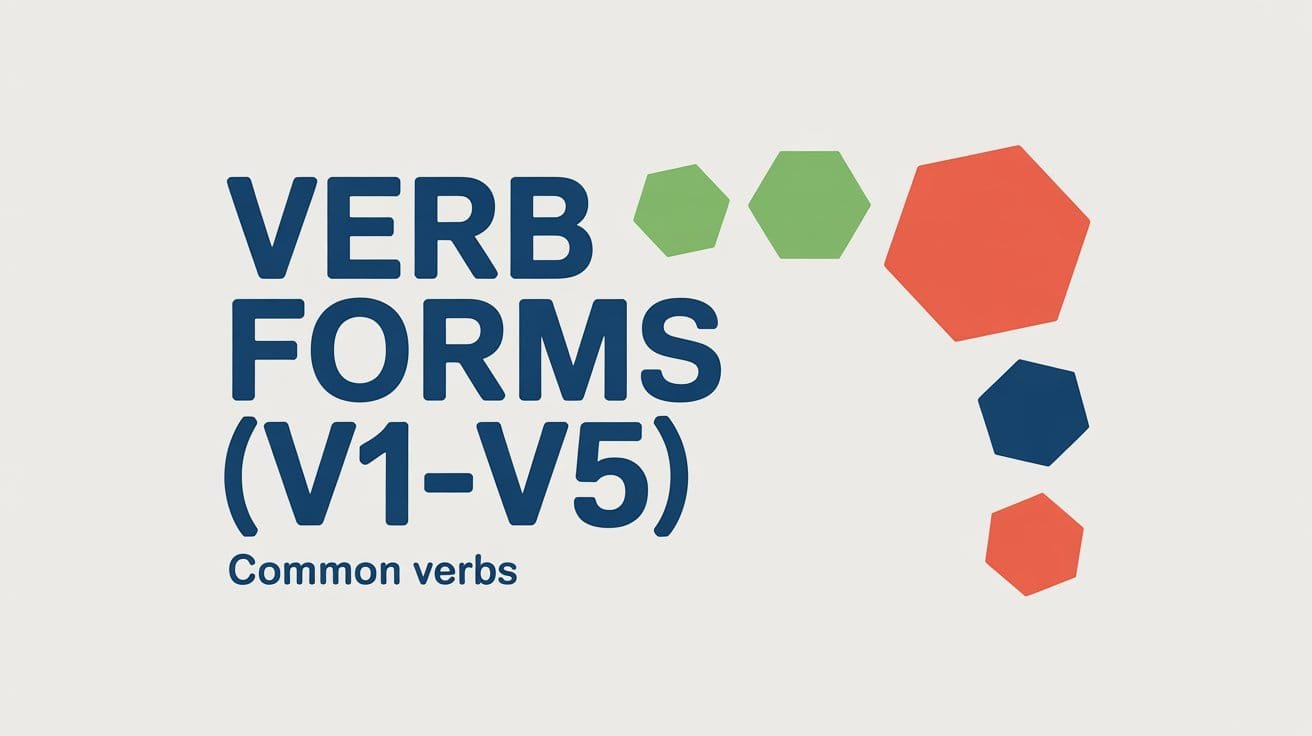In English grammar, an infinitive is the base form of a verb, often preceded by the word “to”. It looks like a verb, but it can function as a noun, adjective, or adverb—depending on how it’s used in a sentence.
For example:
“She loves to read before bed.”
Here, to read is the infinitive, and it acts as the object of the verb loves.
Types of Infinitives in English
Infinitives can play different roles in a sentence. Based on how they function, they are commonly categorized into the following types:
Infinitives as Nouns
An infinitive can act as a subject, object, or complement in a sentence.
Examples:
- To read daily improves vocabulary. (Subject)
- She hopes to win the scholarship. (Object)
- His dream is to become a pilot. (Subject complement)
Infinitives as Adjectives
Infinitives can describe or modify a noun, telling us more about it.
Examples:
- She has a book to read.
- I need a room to rent.
In both cases, the infinitive adds information about the noun.
Infinitives as Adverbs
Infinitives used as adverbs explain why, how, or to what extent something happens.
Examples:
- They paused to rest. (Why did they pause?)
- He ran quickly to catch the bus. (Why did he run quickly?)
These adverbial infinitives often answer the question “why?”
Bare Infinitives vs. Full Infinitives
Infinitives come in two forms in English: bare infinitives and full infinitives. While both use the base form of the verb, they appear in different grammatical structures and follow different rules.
What Is a Full Infinitive?
A full infinitive is the base form of a verb preceded by “to”. It’s commonly used after certain verbs, adjectives, or nouns and often expresses intention, preference, or purpose.
Examples:
- I need to call him later.
- She hopes to travel abroad next year.
- It’s important to stay calm in an emergency.
- His dream is to write a novel.
Full infinitives often follow verbs like want, need, hope, plan, agree, decide, and expect.
What Is a Bare Infinitive?
A bare infinitive is simply the base form of a verb without “to”. It typically appears after modal verbs (can, should, must, will), causative verbs (let, make, have), and perception verbs (see, hear, feel).
Examples:
- I saw her cross the street.
- He can drive very well.
- You must finish your work before leaving.
- They let the children stay up late.
- We watched him run the race.
Bare infinitives never follow “to” and are required by specific verbs or patterns.
Split Infinitives
A split infinitive occurs when a word (usually an adverb) is placed between “to” and the verb in a full infinitive. Though sometimes debated in formal grammar, split infinitives are widely accepted in modern English—especially when they improve clarity or rhythm.
Examples:
- She wants to clearly explain her reasons.
- He promised to never lie again.
- They decided to completely renovate the house.
In the example “to clearly explain,” the adverb clearly splits the infinitive to explain. While older grammar rules frowned on this structure, it’s now considered perfectly acceptable if it improves the sentence’s flow or avoids ambiguity.
When to Use or Avoid
Use split infinitives when:
- They make the sentence clearer.
- The adverb strongly modifies the verb.
- Avoiding it sounds awkward or changes the meaning.
Avoid split infinitives when:
- Writing in very formal or traditional contexts.
- The sentence is already clear without the split.
✔ Acceptable:
It’s important to thoroughly understand the instructions.
❌ Awkward:
It’s important thoroughly to understand the instructions.
Infinitives vs. Gerunds
Infinitives and gerunds often appear in the same sentence positions—usually as subjects or objects. However, they don’t always behave the same way, and choosing the right one depends on the verb that comes before or the tone you want.
Basic Differences
| Feature | Gerund (–ing form) | Infinitive (to + base form) |
|---|---|---|
| Structure | Eating, swimming, running | To eat, to swim, to run |
| Function | Acts like a noun | Acts like a noun, adjective, or adverb |
| Common Use | General activities or habits | Specific intent, goals, or preferences |
| After Certain Verbs | enjoy, avoid, suggest | want, decide, hope, plan |
Examples
- I enjoy swimming. (Gerund as object)
- I hope to swim tomorrow. (Infinitive as object)
- Running is good for health. (Gerund as subject)
- To run every day requires discipline. (Infinitive as subject)
Verb Preference Patterns: Which Verbs Take What?
Some English verbs are naturally followed by gerunds (–ing forms), while others are followed by infinitives (to + base verb). A few verbs can be followed by either—sometimes with a shift in meaning.
Verbs That Take Only Gerunds
These verbs are typically associated with habits, preferences, or avoidance. After them, you should use a gerund—not an infinitive.
Examples:
- She enjoys reading before bed.
- They avoided answering the question directly.
- He denied taking the keys.
❌ Incorrect: She enjoys to read before bed.
✅ Correct: She enjoys reading before bed.
Verbs That Take Only Infinitives
These verbs often relate to intentions, decisions, or plans. They’re followed by an infinitive—not a gerund.
Examples:
- He decided to leave early.
- We hope to travel this summer.
- She refused to answer.
❌ Incorrect: He decided leaving early.
✅ Correct: He decided to leave early.
Verbs That Can Take Both (with Same or Different Meaning)
Some verbs can be followed by either a gerund or an infinitive. For many, the meaning stays the same. For others, the meaning changes based on the form used.
Same Meaning
With verbs like begin, start, continue, you can use either form without changing the meaning.
- She started jogging after work.
- She started to jog after work.
Both are correct and mean the same thing.
Different Meaning
With verbs like remember, stop, try, and forget, the choice does affect meaning.
Examples:
- I remember locking the door. (I did it, and now I recall it.)
- I remember to lock the door. (I won’t forget to do it in the future.)
- He stopped smoking. (He quit the habit.)
- He stopped to smoke. (He paused another activity in order to smoke.)
| Verb | Gerund Meaning | Infinitive Meaning |
|---|---|---|
| remember | recalling a past action | remembering to do something in the future |
| stop | quitting an action | pausing one thing to do something else |
| try | experimenting with a method | making an effort or attempt |
Common Verbs Followed by Infinitives
Many English verbs are naturally followed by infinitives (to + base verb). These verbs often express wants, needs, plans, promises, or offers.
Here’s a list of commonly used verbs followed by infinitives, along with examples:
| Verb | Example Sentence |
|---|---|
| agree | She agreed to help with the project. |
| decide | They decided to cancel the trip. |
| hope | I hope to see you soon. |
| learn | He’s learning to drive. |
| offer | Sarah offered to carry the bags. |
| plan | We plan to renovate the kitchen. |
| promise | He promised to call later. |
| refuse | They refused to cooperate. |
| want | I want to leave early today. |
| expect | She expected to win the match. |
When Not to Use Infinitives
While infinitives are common, there are situations where using them is incorrect or unnecessary. Here are a few key cases:
After Modal Verbs
Modal verbs like can, could, should, will, must, etc., are always followed by the base verb, not an infinitive.
- ✅ You should go now.
- ❌ You should to go now.
After Verbs That Take Gerunds
Some verbs are never followed by infinitives. Instead, they require gerunds.
- ✅ She enjoys swimming in the morning.
- ❌ She enjoys to swim in the morning.
Common gerund-only verbs: enjoy, avoid, consider, mind, suggest, deny, finish.
After Certain Expressions or Prepositions
If a verb comes after a preposition, use a gerund, not an infinitive.
- ✅ He’s interested in learning Spanish.
- ❌ He’s interested in to learn Spanish.
Expressions like good at, afraid of, before, after, by, etc., follow this rule.
Split Infinitives (Sometimes)
While splitting infinitives (placing a word between to and the verb) isn’t always grammatically wrong, it’s often frowned upon in formal writing.
- ✅ She wants to learn quickly.
- ❌ She wants to quickly learn.
(Some modern styles accept split infinitives for clarity, but traditional grammar still prefers keeping the infinitive together.)
FAQs About Infinitives in English Grammar
What is an infinitive verb?
An infinitive verb is the base form of a verb, usually preceded by “to” (e.g., to read, to write, to run). It’s not limited by tense or subject and can act as a noun, adjective, or adverb in a sentence.
Can an infinitive function as a subject?
Yes. Example: To travel the world is her dream. Here, “To travel” acts as the subject of the sentence.
What is the difference between a full infinitive and a bare infinitive?
A full infinitive includes “to” (e.g., to eat), while a bare infinitive is just the verb alone (e.g., eat), usually used after modal verbs or verbs like let, make, see, hear.
When should I use an infinitive instead of a gerund?
Use an infinitive after verbs like want, need, decide, hope, agree. Example: She wants to rest.
Some verbs only accept gerunds (e.g., enjoy, avoid), so it’s important to know the verb pattern.
Can infinitives follow adjectives?
Yes. Example: He was eager to help. “To help” completes the idea introduced by the adjective “eager.”
Are split infinitives wrong?
Not strictly. While traditional grammar avoided them (e.g., to boldly go), many modern style guides accept split infinitives when they improve clarity.
Can you end a sentence with an infinitive?
Yes, especially in informal speech. Example: That’s something I’d love to do.
What’s the role of infinitives in questions or commands?
Infinitives are not used directly in most questions or commands. Instead, we use the base form of the verb without “to”:
Command: Sit down.
Question: Do you want to join?




I love this lesson on infinitives. It was presented clearly. It was filled with examples.